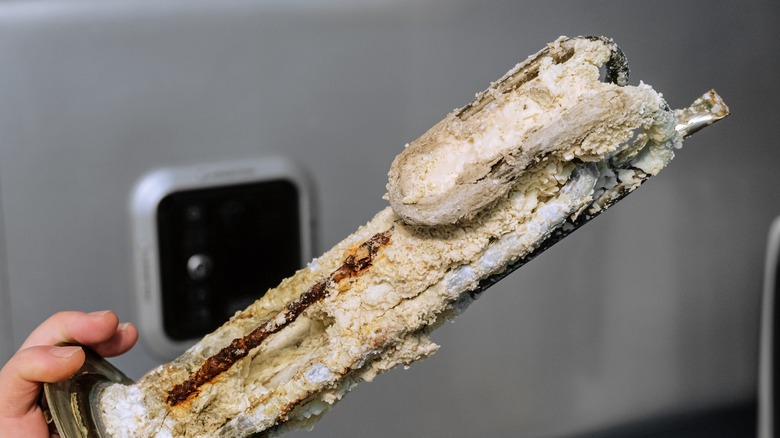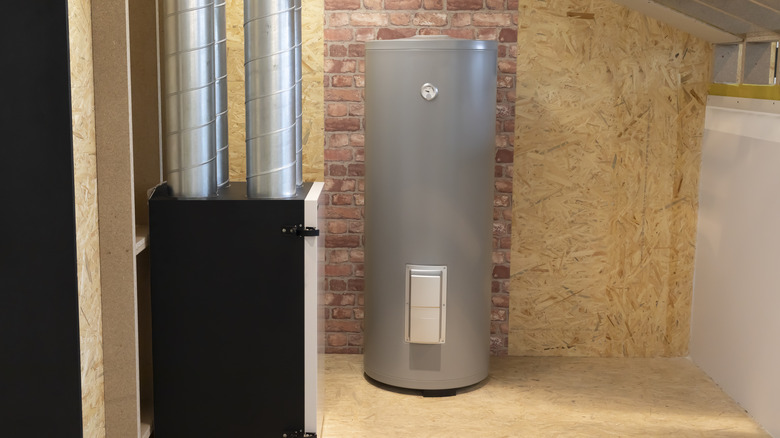Here's What It Means If Your Hot Water Is Rust-Colored (It Can Be A Big Warning Sign)
When you turn on the hot water tap, you expect to see clear flowing water, but sometimes, what you see instead isn't so pretty. Seeing rust-colored water when running a bath or shower is not just aesthetically upsetting, but also can be a big warning sign for your water heater tank's health. The reddish-brown hot water likely indicates there's corrosion on the interior of your hot water heater, and the anode rod may be the culprit.
Experts agree that this rusty water is often due to wear with the anode rod. Water heater anode rods are sacrificial as they electrochemically attract the water's sediment. The sediment builds up from the water's natural minerals and particulates then settles within the tank. Their purpose is to protect the interior of your water heater tank, which features a layer of glass as a shield. Natural wear over time causes your anode rod to fail, so the sediment can eventually corrode the water heater tank's interior. If you suspect the rod is the reason behind your rusty brown water, then you can attempt to fix the problem and improve the lifespan of your heater.
Replacing your anode rod
Exchanging the heater's anode rod can be a DIY project if you're handy. However, expect to spend $200-$300 for a professional in parts and labor. Replacement rods vary in price, so budget $20-$50 for a new rod if you want to replace it yourself. First, you'll need to shut off your home's power and, if applicable, the gas supply. Next, shut off the cold water supply, drain the water heater with a garden hose attached to the drain valve. Turn on the hot water on the tap nearest to the heater while it drains to relieve the pressure. You will then need to find the anode rod, which typically sits under a cap of plastic or metal.
Anode rod locations vary, as some may be at the top of the tank, while others can be on the side or along the hot water pipe. Once you've located the rod, it's time to remove it. You will need a socket wrench, typically a 1¹⁄₁₆ inch socket is a common choice. Unscrew the old rod and remove it completely, then install the new rod, screwing it in tightly.
How long do anode rods last?
Various factors such as water hardness, pH, source, rod material, and sediment amount can affect anode rod lifespan. Plumbing experts recommend replacing your anode rod every 5 to 6 years, but you may need to replace it sooner, depending on your water's corrosive nature. Try to inspect the rod for corrosion and wear every 3 to 5 years to check on its performance. Your manufacturer's manual may recommend how often you should replace the anode rod. In addition, the manufacturer may require you to regularly replace the rod as a condition of the appliance's warranty.
Monitoring your anode rod is an important aspect of water heater maintenance because neglecting the rod may cause damage to your hot water heater's tank and reduce its lifespan. Hot water heaters last an average of 8 to 12 years; however, you can make your hot water heater last longer with proper maintenance to nearly 20 years.


